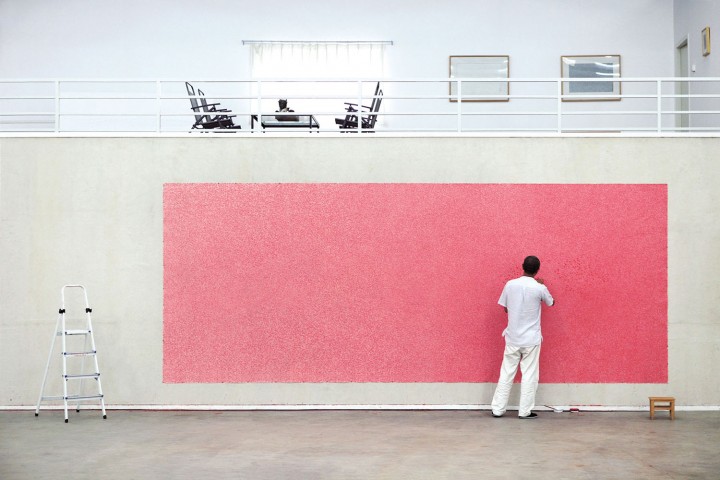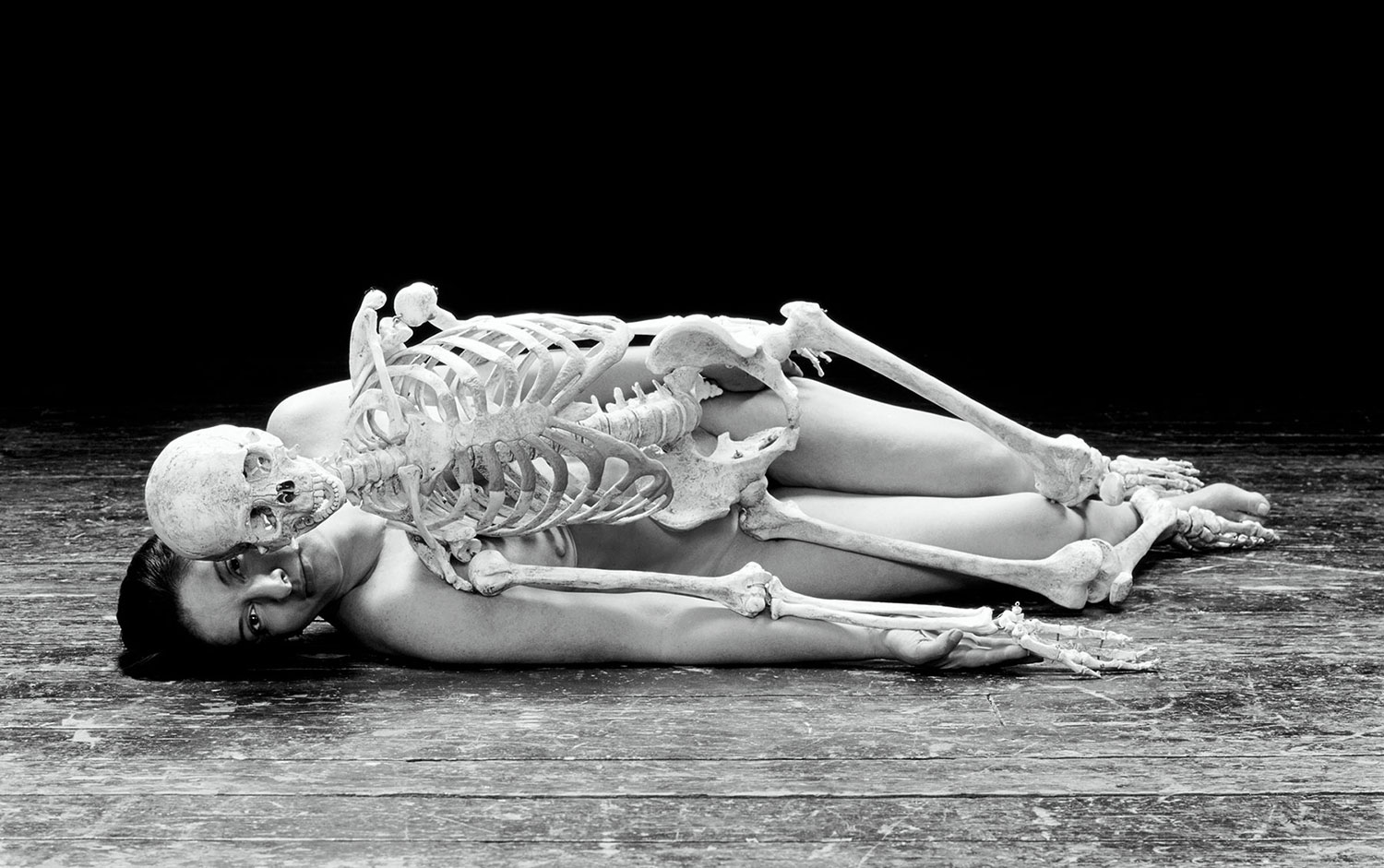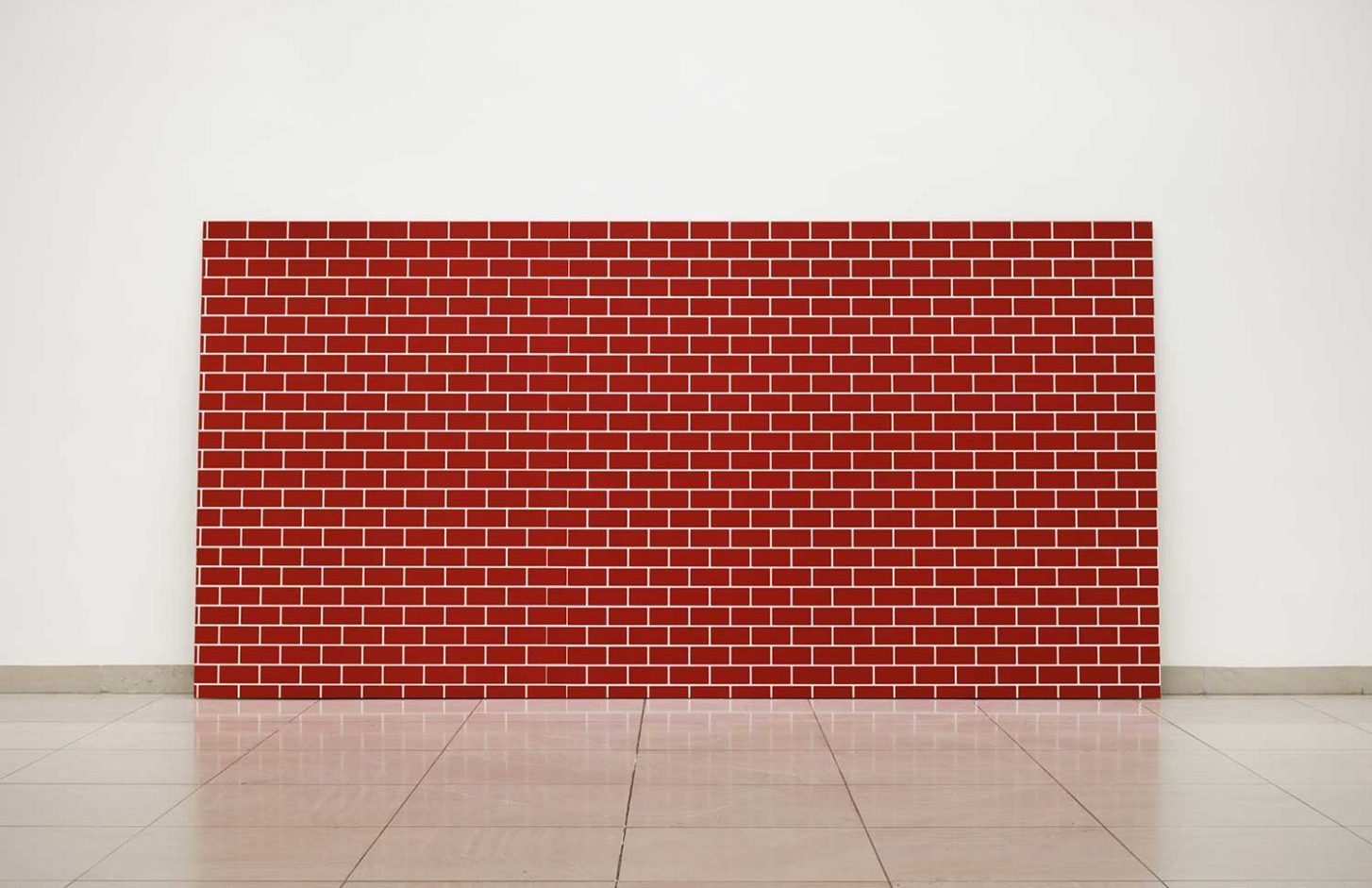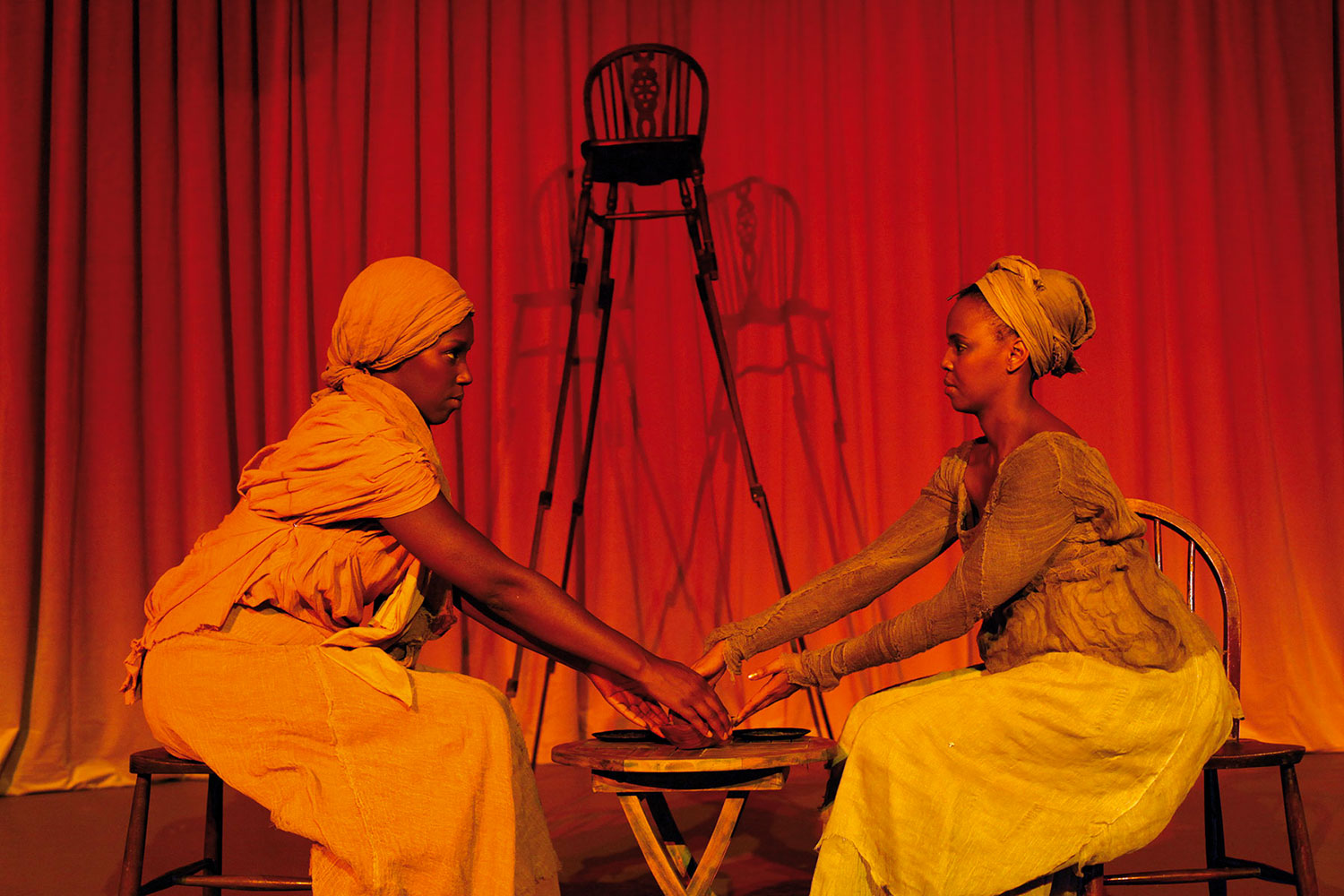
Blake Carter: Over the last 28 years, your work has evolved from the figurative “Fan Painting” (1986-89) and “Portrait” (1989-92) series to abstract paintings and collages in the “Divine Light” (1994-2003) and “Morning Post” (2001-2003) series, and now you’ve been focusing on your “Fingerprints” series since 2001. Could you describe this development?
Zhang Yu: Traditional Chinese painting has a particular “precious” quality to it. An artist must have keen powers of observation and wisdom to understand and grasp the essence of it. My exploration of ink and wash is a process that has gone from traditional to modern and then to contemporary. From the perspective of cultural and artistic development, the “Fingerprints” (1991, 2001-2008) series is a result that both goes along with tradition and goes beyond tradition.
BC: In your writing you’ve drawn a distinction between “modern ink and wash” and “experimental ink and wash.”
ZY: “Modern ink and wash” refers to painting that misappropriates or combines with Western modern art methods to break through the limits of traditional ink painting. For example, some parts of my earlier figurative work have elements of surrealism. “Experimental ink and wash” specifically refers to non-figurative artistic expression that even goes beyond art that decisively breaks with the standards of brush and ink in traditional ink painting. My “Divine Light” series and “Morning Post” series go beyond both Eastern and Western art concepts, emphasizing a unique, personal artistic expression.
BC: You also made works with fingerprints in 1991. Why did you wait until 2001 to continue?
ZY: In the ’80s, all Chinese artists had to think about how to break the shackles of traditional painting. I was fortunate enough to read a lot of excellent material about traditional Chinese paintings while I was an editor at the Tianjin Yangliuqing Fine Arts Press. I spent ten years carefully studying the context and development of traditional painting, as well as developing my ink and brush technique. In 1991, I set aside the historical idea that we have to use a brush to make Chinese ink painting and I produced eight or nine fingerprint works in dried ink. China was still opening, and the Chinese art world was mostly concerned with what Western art had done, or how the West would look at modern Chinese art through a social ideology. Whether friends, artists or critics, their reading and understanding of my fingerprint work was basically superficial. They could not think about the issue from the inner core, only through their own culture. The critics generally believed that my fingerprint works were abstract paintings and belonged to the Western modernist art form. I spent ten more years creating and researching as I produced the “Divine Light” series. By 2001 I had extensive influence in the art world here in China, so it seemed like the right time to return to the “Fingerprints” series.

BC: Could you explain your choice of colors in the “Fingerprints” series?
ZY: It has to do with a cultural concept of a pledge or contract. They are mainly composed of red from plant pigment, gray using ink and wash, or they’re colorless using natural water. Red fingerprints have a symbolic significance as they have been used to initial or sign contracts. Traditionally, Chinese people who are illiterate or do not have a name use red fingerprints to authenticate documents. Ink color refers to the traditional ink-and-wash culture, while water on Xuan paper emphasizes the expressionistic limitations of fingerprinting and highlights the purity and naturalness of the process.
BC: What is the importance of using only your right index finger when making the fingerprint works?
ZY: Only using my right index finger is natural and convenient, and it also accords with the idea of “one-finger Chan” or “one-finger Zen,” a Buddhist practice aimed at concentrating one’s energy or power; “Zen” is pronounced “Chan” in Mandarin.
BC: What role does Chan Buddhism play in your practice?
ZY: It’s important to understand that the fingerprint works are not meant to explain Chan or Buddhism. They are a kind of artistic expression. Although the fingerprint performance can be understood as a way of self-cultivation, it is about the art form. Self-cultivation is the process of a Zen, Buddhist or Taoist practice; it is a road in the most profound way to the human heart. At the end of this road, there is a kind of wisdom we are looking for, and to achieve wisdom, we don’t need physical strength and we don’t need slogans or preaching. We need calmness, simplicity and clarity. It’s beyond narrowness and secularity. The fingerprint process is an exploration of this wisdom through peace and calmness. Fingerprinting is a performance, but with the cultural concept of a contract, it’s also a promise.
BC: You’ve been closely involved in the community of Chinese contemporary artists, editing journals and books, curating exhibitions and attending forums. How important was this community in your development as an artist?
ZY: Whether or not you will become an artist is fate, but my goal is to be an excellent artist. If you want that, all the effort must be consciously from your heart. You must act according to your thoughts; moreover, you should make every effort and point out your opinion to promote the development of art. Editing, publishing and planning are what I do. This community is a group in which I have gathered artists who have the same goal, so some people would say that I am also an activist. However, to me this is the same as being an artist. I know very well that spreading my ideas, opinions and art concepts is the most effective way forward. But while engaging in these activities or this work, for me, the most important thing is to practice analysis and observation. All this is because of the love of art.
BC: How long does it take you to create larger pieces like Fingerprints 2011.2.20 (2011)?
ZY: That’s a large work — 21 meters long. When I wasn’t traveling, I worked on it continuously for two years, except for eating. I work for five to six hours per day, or even longer, every day. It is similar to monks chanting non-stop.

BC: I’d like to ask you a question that you posited in an introductory essay for a 2010 show you curated at Da Xiang Art Space called “The Termination of Ink Painting”: Is it ink art or contemporary art? Here, let’s take “it” to mean your “Fingerprints” series.
ZY: Although we have created a method of artistic expression through the medium of ink and wash, we do not think about this narrowly from the perspective of traditional ink and wash. It should be an expression of contemporary art, which has already gone beyond what is known as Chinese “ink and wash.” Although the “Fingerprints” series uses the medium, it is not considered in the formal sense ink and wash. The series cannot be properly understood or judged using this concept because it has already gone beyond that scope. It isn’t ink-and-wash painting, and it isn’t abstract painting. It is behavioral, it is flat and it is about space. Therefore, the expression of “Fingerprints” is a comprehensive expression.
BC: Critic Jonathan Goodman wrote: “It has taken the kind of advances Western art has made, in modern and contemporary practice, for Zhang to have the space to change his manner of working.” Do you agree with this?
ZY: The artistic expression of the “Fingerprints” performance is a new aesthetic concept. If we must make a judgment under the concept of Western abstract art, it must go beyond the abstract theory of Clement Greenberg and also beyond the abstract expressionism of Jackson Pollock. The “Fingerprints” series provides today’s world a new aesthetic concept through Eastern philosophy.
BC: Would it be right to say that the trajectories of Western art and traditional Chinese ink painting converge in your work?
ZY: For me, the visual experiences of Oriental art and Western art have become one. The 21st century is a special century, because in people’s minds, the whole world is becoming a global village and is getting smaller. It is inevitable that you are in me and I’m in you.





